Premium Only Content

Henri Cartier Bresson
Born on August 22, 1908, in Chanteloup-en-Brie, Seine-et-Marne, France, he witnessed and documented - in his hand-held 35-millimeter Leica camera - some of the world's most defining moments and episodes, including the Spanish Civil War, the partition of India and the German occupation of France among others. Carietr-Bresson also pioneered the genre of street photography and most famously viewed photography as capturing a decisive moment.
On his 15th death anniversary, here's looking at a few interesting facts of the famed photographer.
-As a child, he was a proud owner of a Box Brownie, and would take snapshots during his school holidays.
During his career, he documented portraits of Camus, Picasso, Colette, Matisse, Pound and Giacometti.
-He started his career in Africa, particularly the former French colony Côte d’Ivoire.
In 1932, he placed his first photography work for exhibition in New York at the Julien Levy Gallery.
-In 1935, he again exhibited more of his work at the same gallery, along with fellow photographers Robert Capa and David Seymour.
-The Surrealist movement, founded in 1924, influenced the photographer a lot and Cartier-Bresson began socializing with the Surrealists at the Café Cyrano. He was drawn to the Surrealist movement's technique of using the subconscious and the immediate to influence their work.
-In 1929, Cartier-Bresson met American expatriate Harry Crosby at Le Bourget who presented Henri with his first camera.
-He acted in renowned French film director Jean Renoir's 1936 film Partie de Campagne and in the 1939 La Règle Du Jeu, for which he played a butler and served as second assistant.
-Cartier-Bresson's first photojournalist photos to be published came in 1937 when he covered the coronation of King George VI and Queen Elizabeth.
-Henri Cartier-Bresson tied the knot with a Javanese dancer Ratna Mohini in 1937. The couple divorced 30 years later. He then married Martine Franck and together they had a daughter namely Mélanie.
-In early 1947, Cartier-Bresson, with Robert Capa, David Seymour, William Vandivert and George Rodger founded the famed Magnum Photos.
-He was one of the last people to have met Mahatma Gandhi on January 30, 1948. According to reports, he had shown Gandhi a small catalogue of his one-man exhibition in New York and fifteen minutes after Cartier-Bresson left, Bapu was assassinated.
-Cartier-Bresson's method of using only available light, and editing "in the camera" influenced Satyajit Ray in making his Apu Trilogy.
-Cartier-Bresson retired from photography in the early 1970s, and by 1975 no longer took pictures other than an occasional private portrait.
-Instead, he returned to drawing and painting, holding his first exhibition of drawings at the Carlton Gallery in New York in 1975.
-Cartier-Bresson did not like being photographed, and when he accepted an honorary degree from Oxford University in 1975, he held a paper in front of his face to avoid being photographed.
Music :Kevin Macleod
Tags:
#HenriCartierBresson
#PhotographyLegend
#StreetPhotography
#MagnumPhotos
#DecisiveMoment
#BlackAndWhitePhotography
#Photojournalism
#MasterOfPhotography
#CartierBressonExhibit
#DocumentaryPhotography
#HumanCondition
#PhotographyInfluence
#Bressonian
#LeicaPhotography
#VisualStorytelling
#MonochromeMasters
#CandidPhotography
#PhotographyHistory
#CapturingLife
#LegacyOfBresson
#monochrome
#Legendphotographers
-
 2:12:33
2:12:33
The Quartering
5 hours agoWild Joe Rogan Stream, China Retaliates, Woke Jerks Review BOMB My Coffee & More!
208K87 -
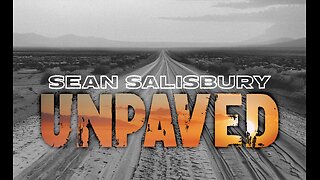 1:07:03
1:07:03
Sean Unpaved
5 hours agoNIL Controversy In Tennessee, Second Round of Masters Tee-Off, Flacco's Return To Cleveland!
44.8K3 -
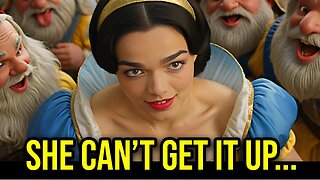 16:09
16:09
Clownfish TV
5 hours agoSnow White Can't Even Break $100 Million?!
30.4K7 -
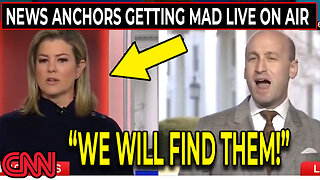 13:23
13:23
T-SPLY
4 hours agoStephen Miller BLOWS UP On CNN For Questioning Deportations
21K31 -
 59:26
59:26
Revenge of the Cis
2 hours agoEpisode 1473: Cyber Tuck
4.74K3 -
 15:09
15:09
Talk Nerdy Sports - The Ultimate Sports Betting Podcast
1 hour ago4/11/25 - Payday Parlays & Bookie Beatdowns: The AI Wants Blood
5.74K -
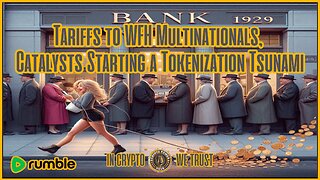 1:02:31
1:02:31
Crypto Power Hour
9 hours ago $2.02 earnedFrom Tariffs to WFH Multinationals, Catalysts Starting a Tokenization Tsunami
18.3K2 -
 49:35
49:35
Rethinking the Dollar
1 hour agoFed Official Warns: They're Ready to Step In— If It Gets Worse | RTD News Update
5.09K4 -
 1:21:59
1:21:59
Twins Pod
14 hours ago"President Trump" Is Out For REVENGE! 😂 | Twins Pod - Episode 60 - Jason Scoop
29.1K2 -
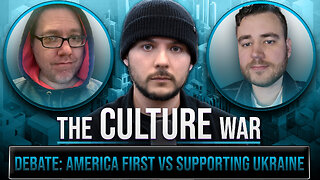 2:08:32
2:08:32
Tim Pool
6 hours agoAmerica First or Supporting Ukraine War, DEBATE | The Culture War with Tim Pool
190K243